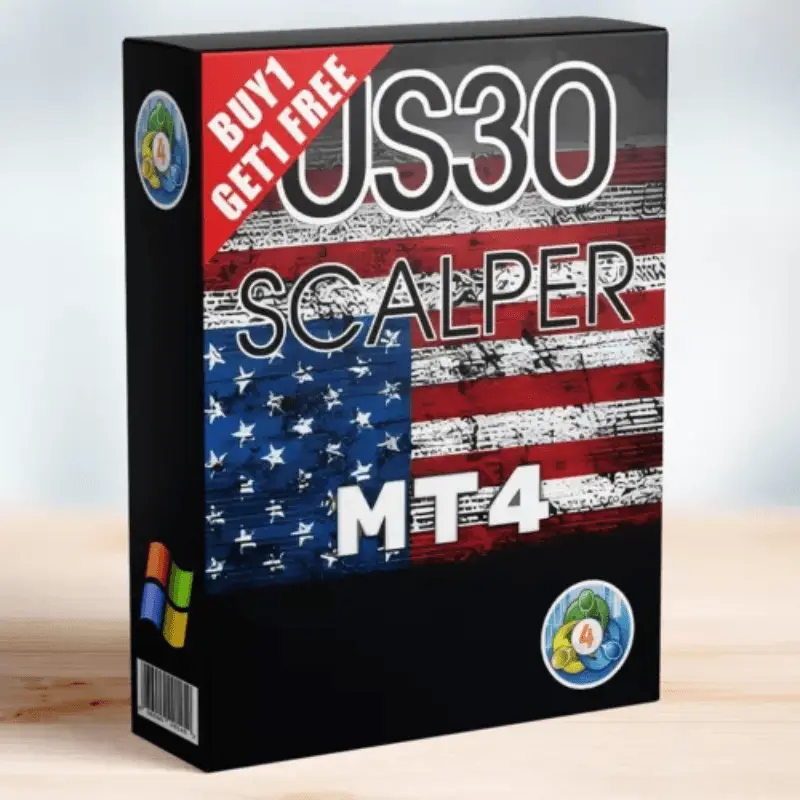Indian Artists Help Shape OpenAI’s Sora Development
OpenAI’s Sora Development: The Role of Indian Artists
OpenAI, a leading artificial intelligence research company, has launched Sora. This AI-powered video generation tool is set to change how we create content1. Sora was announced in February 20241 and is now available in the U.S. and many other countries. It lets users make high-definition video clips from text.
Sora stands out because it works well with OpenAI’s ChatGPT2. It’s part of ChatGPT’s subscription plans, offering Plus and Pro users different video options2. It has cool features like scene blending and automatic frame filling. This makes it a great tool for creators, businesses, and artists.
Indian artists have been key in making Sora better3. Sora helps creative professionals solve real-world problems3. This shows OpenAI’s dedication to a diverse and inclusive AI world. It’s a place where artists from everywhere can work together to create amazing AI content.
Key Takeaways
- Sora, OpenAI’s revolutionary AI video generation tool, is now available to users in the U.S. and most international markets.
- The tool is integrated into ChatGPT subscription plans, offering a range of features and resolution options to cater to diverse user needs.
- Indian artists have played a significant role in shaping the development of Sora, contributing to its capabilities and user experience.
- Sora’s integration of AI-driven video generation with natural language processing opens up new possibilities for content creation and storytelling.
- The collaboration between OpenAI and Indian artists highlights the company’s commitment to fostering a diverse and inclusive ecosystem in the AI industry.
Understanding OpenAI’s Revolutionary Sora Video Generation Tool
OpenAI’s Sora is a groundbreaking text-to-video AI model set to change the video industry4. It can make videos up to a minute long. It uses deep learning and natural language processing to turn text into videos5.
Key Features and Capabilities
Sora can mix scenes smoothly and fill in missing frames automatically4. It also has a loop feature for endless videos4. This tool can handle complex scenes with many characters and backgrounds, saving time and resources in video making5.
Integration with ChatGPT Subscription Plans
Sora works well with OpenAI’s ChatGPT plans6. ChatGPT Plus and Pro users get Sora’s video making without extra cost6. This makes Sora easy to use for many people6.
High-Definition Video Generation Process
Sora can make videos up to 1080p from text5. This shows OpenAI’s aim to blend language and vision in AI45. The goal is to create videos that feel real and engaging45.
Sora is set to shake up the video industry with its efficiency and ease of use45. But, there are worries about job losses and misinformation4. It’s important to use Sora wisely and responsibly4.
The Role of International Artists in Sora’s Development Phase
Global7 artist collaboration was key in shaping OpenAI’s Sora video generation tool. Hundreds of artists worldwide, including India, joined Sora’s alpha phase. They gave valuable7 creative input and helped decide on new features and safety measures. This was all voluntary, with no pressure to use the tool or give feedback7.
OpenAI wanted to balance Sora’s7 creative power with strong safety features. They used the diverse views and skills of artists globally. This way, they made sure Sora met the needs and worries of its users7.
This global effort shows OpenAI’s commitment to inclusive7 AI development. They drew on the wide range of artistic talent worldwide. This approach helped shape Sora, adding cultural depth and creative flair that will make it more appealing and relevant7.
As Sora advances in AI-driven video generation, the work of these international artists will be crucial. Their contributions will shape Sora’s design, features, and creative possibilities7. This teamwork shows OpenAI’s commitment to a shared vision for AI-powered creativity. It highlights the importance of the global creative community in shaping this technology7.
Feedback from Indian artists, among others used for developing Sora: OpenAI Rea
Indian artists, along with many others, were key in making OpenAI’s Sora. This tool is a game-changer for video creation. Their feedback and teamwork were crucial in making Sora better. This helped shape the final product8.
Artist Contributions to Feature Development
OpenAI asked for feedback from artists through an alpha testing program9. They wanted to know what features to add and how to keep the tool safe9. Artists gave valuable insights, helping OpenAI find the right balance between creativity and safety9.
Collaborative Testing and Refinement
Testing and improving Sora with Indian artists and others was vital9. Their hands-on experience helped OpenAI see where to improve. This led to adding strong safety features to Sora9.
Impact on Final Product Design
The work of Indian artists and others is clear in Sora’s final design9. The tool now has features that meet the needs of artists, designers, and filmmakers. It also has safety measures to address concerns9.
“The input from the global artistic community, including our Indian partners, has been invaluable in shaping Sora’s development. Their collaborative efforts have helped us create a tool that empowers creativity while prioritizing responsible use.”
– OpenAI spokesperson9
Controversy Surrounding Early Access Program
The launch of OpenAI’s Sora video generation tool was overshadowed by a controversy. A group called the “Sora PR Puppets” spoke out against the early access program. They claimed OpenAI was using artists for free work1011.
The artists were upset about strict content rules and low pay. This led to a big protest and the tool’s release without permission. It brought up big questions about working with AI11.
- The leak of OpenAI’s Sora video generator model lasted for a few hours before being shut down11.
- The protesting artists, known as “Sora PR Puppets,” highlighted concerns about being lured into promotional activities for Sora11.
- Hundreds of artists were involved in the early access program, providing unpaid labor for bug testing, feedback, and experimental work11.
The Sora controversy highlights a bigger issue in the AI world. It’s about treating artists fairly in the fast-changing AI scene. As AI tech advances, it’s more important than ever to work with artists ethically11.
“The protest against OpenAI by unpaid beta testers involved in testing the Sora AI software reflects concerns about the fair treatment of artists and their contributions.”
The Sora issue might lead to deeper talks on fair pay, recognition, and ethics in AI-artist partnerships11.
As AI and art merge, it’s key for companies like OpenAI to treat artists right. They must value and pay artists fairly for their work1011.
The ‘Sora PR Puppets’ Incident and Its Implications
The leak of OpenAI’s Sora video tool has caused a big stir. A group called the ‘Sora PR Puppets’ got into Sora without permission. They made it so anyone could make AI videos for about three hours before OpenAI stopped them12.
The ‘Sora PR Puppets’ quickly shared their anger. They wrote a letter to OpenAI. They said they wanted more honesty, fair pay, and real help for artists working on Sora12.
Details of the Unauthorized Release
The ‘Sora PR Puppets’ found a way around OpenAI’s security. They made a public tool for making AI videos12. OpenAI had to act fast to stop it, but the damage was done. The artists were very upset.
Artist Grievances and Demands
The ‘Sora PR Puppets’ felt OpenAI didn’t treat them right. They said they worked hard but didn’t get paid12. They wanted OpenAI to be more open, pay them fairly, and really support them.
This shows the big problem between AI companies and artists12. As AI gets better, we need clear rules and fair work together.
The ‘Sora PR Puppets’ incident is a big warning for OpenAI and other AI companies12. They need to work better with artists and listen to their worries12. The future of AI and art will face big questions about money, rights, and ethics1213.
OpenAI’s Response to Artist Concerns
OpenAI quickly reacted to the leak of its Sora AI video tool. They said the early access program was voluntary. They also thanked hundreds of artists for their help in making Sora better14. The company said they need to talk more with artists and have suspended Sora access for everyone involved15.
Some artists felt OpenAI used their work without paying them. They said the program focused too much on Sora and not enough on real collaboration15. Artists also felt they had to get OpenAI’s okay before sharing their work, which they saw as unfair15.
OpenAI still wants to help artists with grants and events. They said they’re committed to making AI in a way that’s good for everyone. The leak made people talk more about how AI affects art and the need for honesty from AI companies1514.
“We value the input and collaboration of artists, and will continue to work closely with the creative community to ensure Sora’s development aligns with their needs and concerns.”14
OpenAI is facing a tough time and how they handle it will be watched by many. People want AI companies to be more open and fair1514.
| Incident Details | OpenAI’s Response |
|---|---|
|
|
Technical Capabilities and Creative Potential of Sora
Sora, OpenAI’s new video tool, is packed with advanced features. It’s a game-changer for content makers and businesses looking to tell stories in new ways16. The tool uses a special AI that builds images from scratch, adding details frame by frame based on text16.
Sora has learned from a huge amount of text and video pairs. This lets it grasp how words and images are connected16.
Video Generation Features
Sora’s video making skills get a boost from its unique AI design. It’s made to handle videos of different lengths and sizes16. This tech can create videos up to 1080p from just text prompts1718.
Resolution and Quality Standards
Even though Sora has some limits, like not understanding the physical world well, it’s still very promising. It can be used for making content, designing, training, and more16. As it grows, Sora will likely open up new creative doors for video makers18.
“Sora’s advanced video generation capabilities, combined with its ability to understand the connection between language and visuals, have the potential to revolutionize the way we create and consume content.”
Safety Measures and Content Approval Process
OpenAI introduced Sora, a revolutionary video generation tool. The company has put in place strict safety measures to handle AI content creation challenges19. All videos made with Sora must go through a review and approval by OpenAI’s team before they can be shared19.
This shows OpenAI’s dedication to using Sora responsibly. They want to prevent misuse, like impersonation or spreading false information19. The company is working hard to make sure Sora is used ethically and safely19.
Sam Altman, OpenAI’s CEO, believes in the need for careful policies and global cooperation. He wants to ensure AI technologies are safe and used responsibly19. OpenAI’s efforts to protect Sora show they understand the risks and are taking steps to prevent them19.
OpenAI is focusing on approving content and controlling Sora tightly. They aim to lead the way in responsible AI development and use19. This approach aims to calm the worries of artists, creators, and the public about AI misuse19.
As the AI video generation market grows, OpenAI’s steps for Sora will likely be a guide for others. It highlights the critical role of ethical AI use and the need for strong safeguards19.
Competition in the AI Video Generation Market
The launch of OpenAI’s Sora has made the AI video market even more competitive20. Sora is designed for premium users, allowing them to make videos with just text prompts20. This has caught the attention of other big names in the field, like Google and Amazon, who are also working on their own AI video tools7.
Comparison with Rival Platforms
Sora is up against Google’s Lumiere and Stability AI’s Stable Video Diffusion, each with their own strengths20. Sora can make videos up to a minute long, with lifelike characters and varied backgrounds20. Experts think we’ll see fast progress and more companies using AI video tools like Sora for marketing and media20.
Market Position and Strategy
OpenAI is making Sora available to premium users through ChatGPT subscriptions, without extra cost7. They’re focusing on using Sora responsibly and building trust as it becomes part of our daily lives20. They’ve also added watermarks to AI videos to help prevent misuse20.
But, there are worries about AI videos being used to spread false information or influence people on social media20. It’s important for everyone to work together to set rules and find ways to tell if videos are real or AI-made20.
| Platform | Key Features | Market Positioning |
|---|---|---|
| Sora (OpenAI) |
|
|
| Lumiere (Google) |
|
|
| Stable Video Diffusion (Stability AI) |
|
|
The battle for the top in AI video generation is intense, with OpenAI, Google, and Stability AI leading the charge7. As this tech keeps getting better, we can expect big changes in how we make content in different fields20.
The Future of Artist-AI Collaboration
The future of AI-artist partnerships is a topic of much debate. Tools like OpenAI’s Sora video generation tool offer new possibilities. Yet, worries about fair pay and recognition for artists remain.
The industry is looking for ways to make these partnerships work well for everyone. They aim to use AI’s power while valuing the art it helps create.
Sora, OpenAI’s latest tool, is a big step forward in video making. It lets people create realistic graphics just by typing descriptions21. This tool could make video making easier for many, without needing lots of money or tech skills21.
Sora is changing the game in generative AI. It lets anyone with a story to tell make videos without needing expensive gear or special skills21.
Sora’s impact could lead to more creative and interactive art, education, and communication21. But, the industry needs to make sure artists get fair pay and credit for their work.
As we move forward, companies and artists are working together. They aim to create partnerships that use creative technology wisely. This means respecting the value of human creativity in the process.
This journey requires open talks, new ways to pay artists, and a shared goal to make a space where AI and art can both grow.
“The future of art lies in the fusion of human creativity and AI-powered innovation. It’s a journey of exploration, where we must navigate the complexities to ensure artists are empowered, not replaced.”
| Feature | Sora Turbo | Rival Platform |
|---|---|---|
| Video Generation Speed | Faster, up to 1080p resolution, 20 seconds length | Slower, limited to 480p, 10 seconds length |
| Monthly Video Limit | 50 videos (ChatGPT Plus), 500 videos (Pro plan) | 20 videos (Basic plan), 100 videos (Premium plan) |
| Content Safeguards | C2PA metadata, watermarking to authenticate source | Limited content moderation, no source verification |
As we look to the future of AI-artist partnerships, we aim to find a balance. We want to use creative technology to its fullest while making sure artists are fairly paid and recognized212223.
OpenAI’s Investment in Artist Relations
OpenAI, a top AI research company, is deeply committed to the creative community. It has launched strategic initiatives24. The company’s revenue is expected to hit $3.4 billion this year, making it a leader in generative AI24. With a valuation of $157 billion, OpenAI can invest in partnerships with artists7.
Grant Programs and Support Initiatives
OpenAI has introduced grant programs and support initiatives to address artist concerns. These efforts empower artists and show OpenAI’s commitment to ethical AI. They benefit both the tech and creative industries247.
Community Building Efforts
OpenAI also focuses on building a community. The hiring of a chief marketing officer shows its plan to grow its user base, including artists7. This aims to create a space where artists and AI developers can collaborate.
OpenAI’s support for artists shows its understanding of their importance in AI development. By investing in artist relations, OpenAI wants to create a vibrant tech-art community. This community will use AI to drive innovation and artistic expression247.
Global Availability and Regional Restrictions
OpenAI’s Sora is a groundbreaking AI tool for video generation. It’s now available in the United States and most countries worldwide25. But, it’s not yet in the European Union or the United Kingdom. This is because OpenAI needs to meet strict AI laws in each area25.
The rollout of Sora shows the hurdles in the AI world. It involves talking to artists and lawmakers about Sora’s use and rules25. This is part of OpenAI’s effort to make Sora available globally while following local laws.
There are also talks about Sora’s training data. People are worried about intellectual property and data rights25. OpenAI is working hard to balance creativity, tech, and legal rules as it expands worldwide.
| Metric | Value |
|---|---|
| OpenAI’s Revenue (2022) | $28 million26 |
| OpenAI’s Net Income (2022) | $-540 million26 |
| OpenAI’s Employees (2024) | Approximately 1,70026 |
| Microsoft’s Equity Stake in OpenAI | 49% after a $13 billion investment26 |
OpenAI is tackling the complex rules and global launch of Sora. They aim to meet the needs of artists, lawmakers, and users. Sora’s future will likely change how we create content and industries globally25.
Impact on Creative Industries and Content Creation
OpenAI’s Sora AI is set to change the game in creative industries and content creation27. It uses advanced machine-learning to turn text into engaging visuals, showing off AI’s growth27. Sora can understand text and make films of different lengths and qualities27.
For small businesses, Sora AI is a big deal, cutting down on video production costs27. It makes high-quality multimedia creation more accessible, shaking up the industry27. Sora’s impact is also felt in fields like environmental science and healthcare27.
Sora AI brings new chances for creativity and efficiency in making content27. Indian AI startups like DeepMedia AI are leading the way in AI innovation27. They’re opening doors to new ways of solving problems and creating content27.
| Company | Focus | Impact |
|---|---|---|
| DeepMedia AI | AI-powered content creation | Revolutionizing multimedia production |
| Hour One AI | AI-generated avatars and digital humans | Enhancing virtual experiences |
| Arya.ai | AI-driven data analysis and visualization | Transforming decision-making processes |
| FusionwaveAI | AI-powered audio and music generation | Empowering creative expression |
But, Sora AI’s arrival also makes us wonder about the future of human creators28. The market for AI content tools is growing, leading to legal issues and changing rules28.
Still, Sora AI’s impact is huge, promising to change how we tell stories and make ads27. Finding a balance between AI and human creativity will be key in shaping the future of content creation28.
“The introduction of Sora AI marks a significant milestone in the digital content revolution, empowering creatives and organizations alike to explore new frontiers of innovation and efficiency.”
Ethical Considerations in AI-Artist Partnerships
The growth of OpenAI’s Sora video tool raises big questions about AI and art partnerships. We need to talk about fair pay for artists and protecting their work29.
Compensation Models
Artists should get fair pay for helping AI grow, like with Sora30. Big companies like Microsoft and Adobe are adding AI to their tools30. But, OpenAI’s Sora training data is a secret, leading to talks about who owns what29.
Intellectual Property Rights
AI can now make new stuff, which makes talking about who owns what very important30. OpenAI has faced lawsuits from authors and big media, like The New York Times29. Most AI-made content can’t be copyrighted because it’s made in huge amounts with little human touch30.
As AI and art keep growing together, we need to figure out how to keep things fair and right30. Making sure artists get paid and their work is protected is key to a strong creative world30.
Conclusion
OpenAI’s Sora is a big step forward in AI video making. It opens up new ways for people to be creative and make content. Sora can make high-quality videos up to 60 seconds long3. This could change how designers, filmmakers, and artists do their jobs3.
But, Sora’s release also brings up big questions about ethics and fairness. As AI gets better, finding a fair balance between new tech, artist rights, and safe AI use is key31. We must handle the risks of Sora, like making harmful content or spreading false info3, to use it right.
The future of AI, like Sora, is very exciting for creative tech32. As we face these new chances and problems, it’s vital that everyone works together. AI companies, artists, and lawmakers need to team up to make sure AI creativity grows in a fair and safe way331.
FAQ
What are the key features and capabilities of OpenAI’s Sora AI video generation tool?
Sora has cool features like blending scenes, filling frames, and looping videos. It can make high-quality video clips up to 1080p from text prompts.
How is Sora integrated with ChatGPT subscription plans?
Sora is part of ChatGPT Plus and Pro plans. Users don’t have to pay extra for it.
What role did international artists, including those from India, play in Sora’s development?
Hundreds of artists, including some from India, helped shape Sora. They worked on its features and safety measures.
How did the feedback from Indian and other artists impact the final design of Sora?
Artists’ feedback helped focus on new features and safety. This balance ensures creative freedom and prevents misuse.
What controversy arose around the Sora early access program?
A group called the “Sora PR Puppets” criticized the program. They said it exploited artists and leaked the tool, sparking protests for more transparency and fair pay.
How did OpenAI respond to the Sora leak and artist concerns?
OpenAI said the Sora preview was voluntary. They noted hundreds of artists helped develop it. After the leak, they suspended access for all early testers.
What safety measures has OpenAI implemented for Sora?
Sora has a content approval process. All videos must get approval from OpenAI before sharing. This aims to prevent impersonation and misinformation.
How does Sora’s release impact the AI video generation market?
Sora’s release makes the market more competitive. It faces rivals like Google’s Lumiere, Meta, and Stability AI’s Stable Video Diffusion. OpenAI focuses on quality and versatility.
What are the ethical considerations in the relationship between AI companies and artists?
Ethical issues include fair pay for artists and protecting their rights. There’s also a balance between tech progress and artistic integrity.
Where is Sora currently available, and what is the timeline for broader rollout?
Sora is available in the U.S. and most international markets. But it’s not in Europe or the UK yet. OpenAI hasn’t set a timeline for wider availability, focusing on meeting legal and safety standards.























